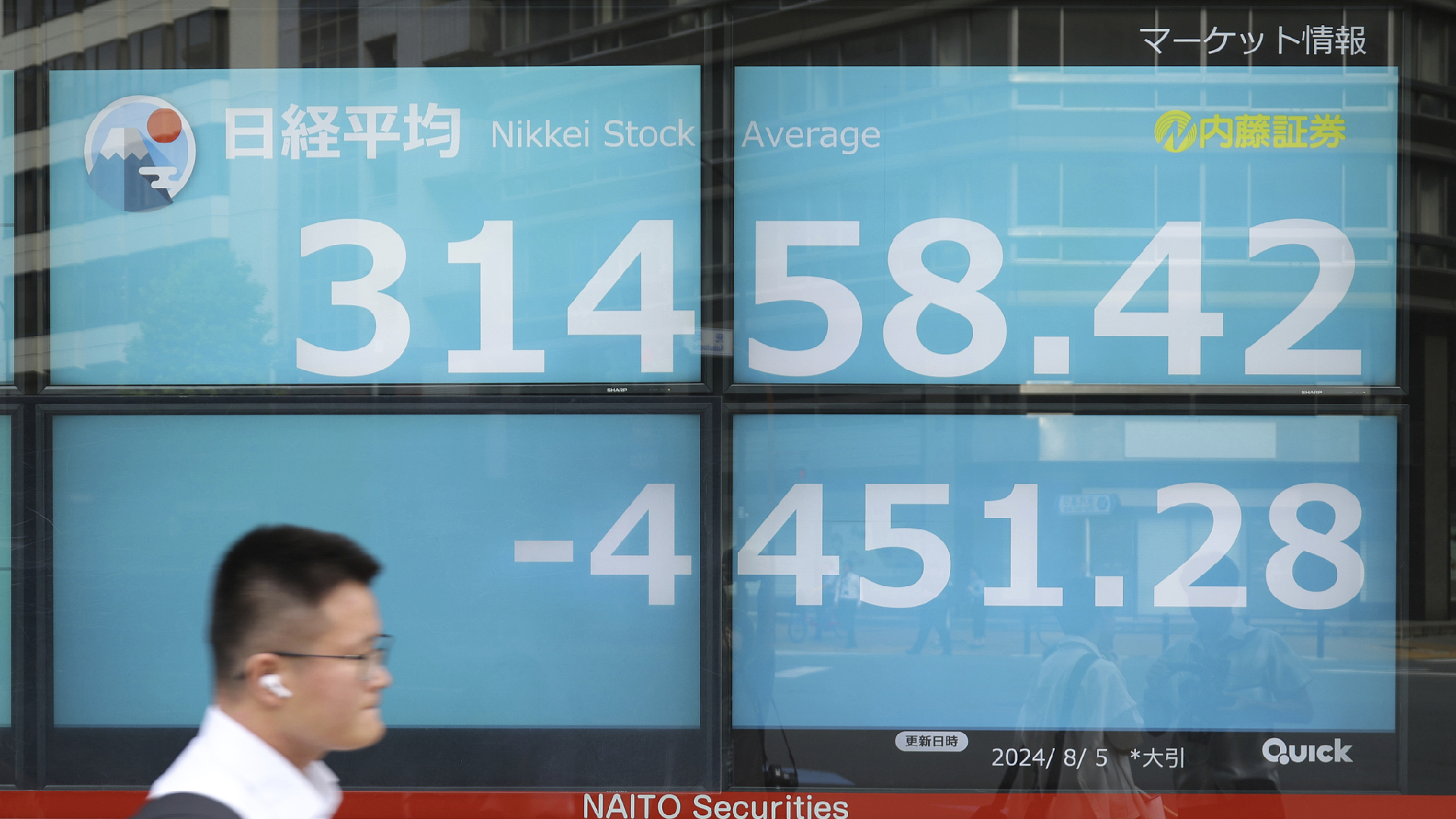Market Turmoil: Exploring the Future of USD/JPY and Nikkei 225
Recent fluctuations in global financial markets, particularly in Japan's asset markets, have been driven by concerns over U.S. economic growth and a hawkish stance from the Bank of Japan (BoJ). On Wednesday, the BoJ made a surprising announcement, asserting that it would not raise interest rates during periods of market instability. Amid the chaos and uncertainty, two-year U.S. treasury notes have emerged as one of the most dependable indicators.

Global risk assets have faced significant challenges recently, with turbulence persisting into the beginning of this week. Investors are concerned that the Federal Reserve may have delayed adjusting its policy too long, particularly in light of last Friday's disappointing U.S. jobs report and a series of weak economic indicators suggesting a potential recession.
**JPY-Based Carry Trade Reversal**
Last Wednesday (July 31), marked a shift in monetary policies. The Bank of Japan (BoJ) surprised markets with a larger-than-expected interest rate hike, while the Fed indicated a potential rate cut. The BoJ's unexpected 15 basis point increase—compared to the anticipated 10 basis points—resulted in USD/JPY dropping below 149 for the first time since March, marking its most bearish performance in three months.
As U.S. stocks experienced a decline, USD/JPY fell by 10 percent over the course of two weeks, leading to a significant unwinding of carry trades and pushing the VIX volatility index above 20 percent.
For context, carry trading involves borrowing funds at low-interest rates and investing them in higher-yielding assets. This strategy is particularly common in the foreign exchange market, where traders capitalize on low-interest rates and weaker currencies in one country to invest in another with better returns. Japan's long-standing ultra-loose monetary policy and a depreciating yen have made it a favored option for global investors seeking to boost their returns via carry trades.
The recent unwind has been intensified by the yen's recovery, particularly as the BoJ's outline for tapering bond purchases was less specific than traders had hoped. Nevertheless, there are expectations for a reduction by half to three trillion yen by the first quarter of 2026. Following a robust 10 percent surge of the yen against the dollar, the Nikkei 225 index plummeted by 13 percent during its worst day since the Great Financial Crisis, although it has since rebounded by 10 percent as of Tuesday.
**BoJ Capitulates Spectacularly**
The BoJ's monetary policy decisions are crucial for future market movements. Shinichi Uchida, the BoJ's deputy governor, stated that the bank will not hike interest rates during unstable market conditions, clearly indicating to traders the necessity of creating volatility to prevent any further rate hikes.
This represents a significant capitulation, seemingly calculated to restore stability to financial markets. Just over a week prior, the BoJ had increased rates more than expected and expressed a hawkish outlook for monetary policy.
This suggests that the BoJ may succumb to market pressures rather than pursue what could be beneficial for the Japanese economy, giving traders a green light to re-establish carry trades until the BoJ signals another potential rate hike or a significant global economic downturn occurs.
Given these developments, it's understandable why the yen is weakening. Uchida further emphasized that the BoJ must maintain its current degree of monetary easing for the time being, suggesting that the bank would not be out of sync if it refrained from accelerating rate hikes too quickly.
**Nikkei Enjoying Weaker JPY Again**
Looking at the Nikkei 225, it has rebounded significantly after Monday's sell-off, with prices approaching former support levels, which may now function as resistance at 35,280 and 35,700, along with a prior uptrend dating back to early 2023. To break through this resistance zone, the Nikkei will likely need additional gains in USD/JPY.
Having surpassed the 33,750 mark during the recent bounce, this level may now serve as support in the event of a pullback, following its role as significant resistance throughout much of the previous year. While momentum indicators have yet to signal a bullish trend, the relative strength index (RSI) is testing a downtrend that has persisted since earlier this summer and is no longer in oversold territory.
**Cut Out Noise to Avoid Panicking**
In these market conditions, it is essential to rely on credible market indicators. For me, two-year U.S. Treasury notes serve as one of the most dependable indicators for predicting other asset market movements. They are liquid, considered a safe haven, and have led many recent market shifts.
When risk assets appear unstable, short-end yields often indicate how to respond. A sharp decline in these yields typically signals impending declines in risk assets, and vice versa.
The dynamics of USD/JPY are heavily influenced by relative interest rate differentials. Long before the onset of volatility in riskier asset classes and USD/JPY, the two-year yield spreads between the U.S. and Japan had been narrowing since May, a shift that diverged from USD/JPY, which continued to rise.
Should this trend continue, understanding the relative rate differentials between the U.S. and Japan may provide insights into where USD/JPY and the Nikkei 225 could find a bottom.
Short-end yields have significantly impacted USD/JPY and the Nikkei 225 over the past month, demonstrating scores of 0.95 and 0.93, respectively, on a daily basis. For example, Tuesday saw two-year U.S. Treasury yields surge nearly 35 basis points from their lows on Monday, coinciding with reversals in both the Nikkei 225 and the yen from Monday's trends.
Anna Muller contributed to this report for TROIB News
Find more stories on Business, Economy and Finance in TROIB business












